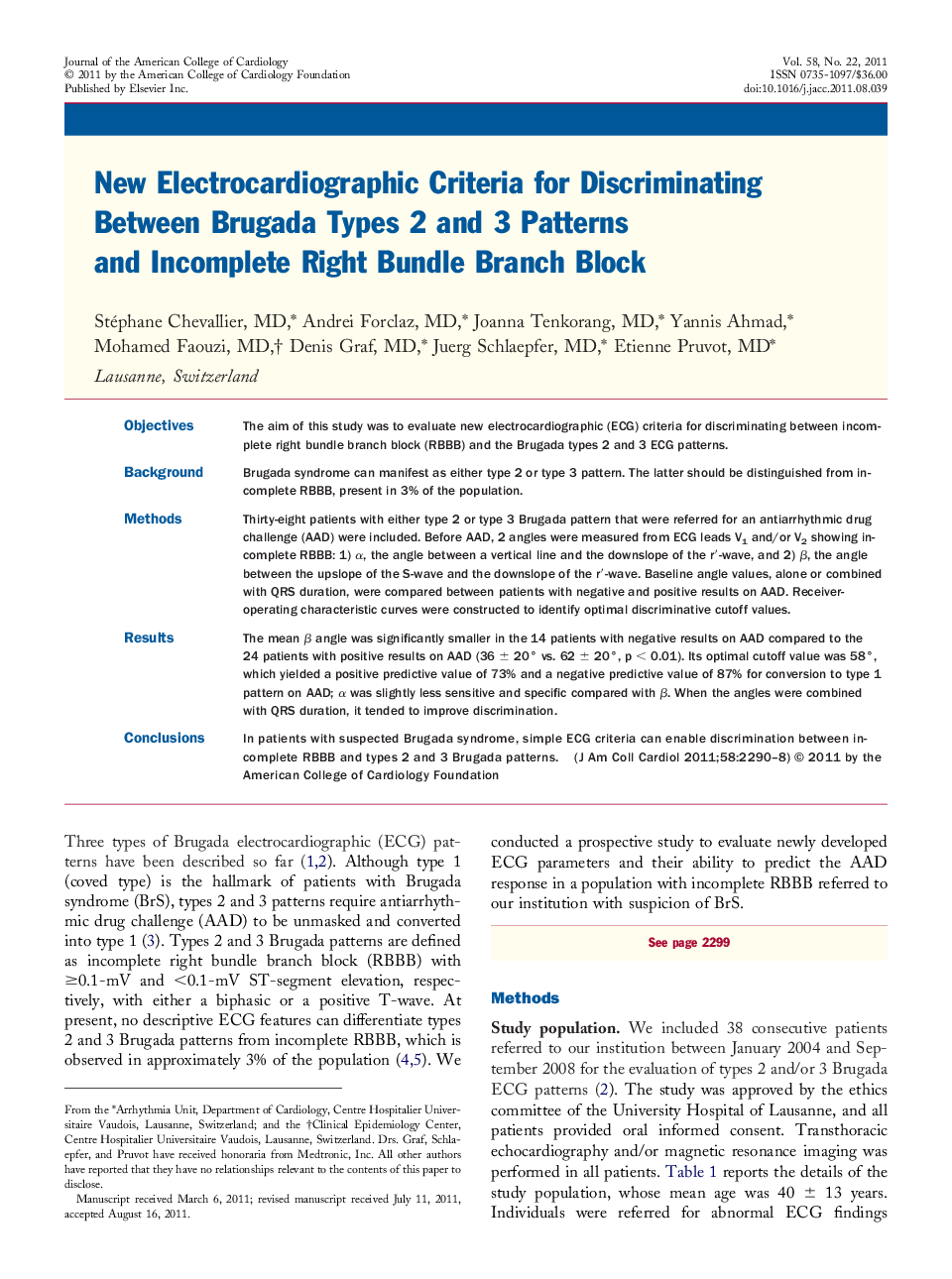| Article ID | Journal | Published Year | Pages | File Type |
|---|---|---|---|---|
| 2947655 | Journal of the American College of Cardiology | 2011 | 9 Pages |
ObjectivesThe aim of this study was to evaluate new electrocardiographic (ECG) criteria for discriminating between incomplete right bundle branch block (RBBB) and the Brugada types 2 and 3 ECG patterns.BackgroundBrugada syndrome can manifest as either type 2 or type 3 pattern. The latter should be distinguished from incomplete RBBB, present in 3% of the population.MethodsThirty-eight patients with either type 2 or type 3 Brugada pattern that were referred for an antiarrhythmic drug challenge (AAD) were included. Before AAD, 2 angles were measured from ECG leads V1 and/or V2 showing incomplete RBBB: 1) α, the angle between a vertical line and the downslope of the r′-wave, and 2) β, the angle between the upslope of the S-wave and the downslope of the r′-wave. Baseline angle values, alone or combined with QRS duration, were compared between patients with negative and positive results on AAD. Receiver-operating characteristic curves were constructed to identify optimal discriminative cutoff values.ResultsThe mean β angle was significantly smaller in the 14 patients with negative results on AAD compared to the 24 patients with positive results on AAD (36 ± 20° vs. 62 ± 20°, p < 0.01). Its optimal cutoff value was 58°, which yielded a positive predictive value of 73% and a negative predictive value of 87% for conversion to type 1 pattern on AAD; α was slightly less sensitive and specific compared with β. When the angles were combined with QRS duration, it tended to improve discrimination.ConclusionsIn patients with suspected Brugada syndrome, simple ECG criteria can enable discrimination between incomplete RBBB and types 2 and 3 Brugada patterns.
